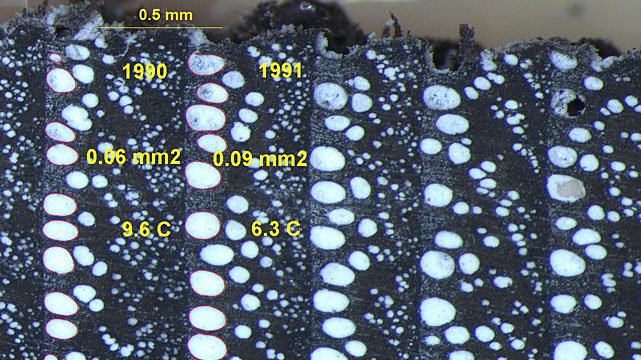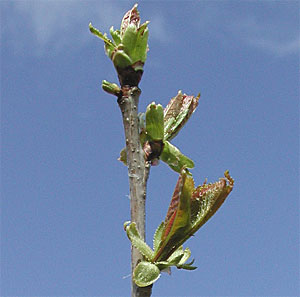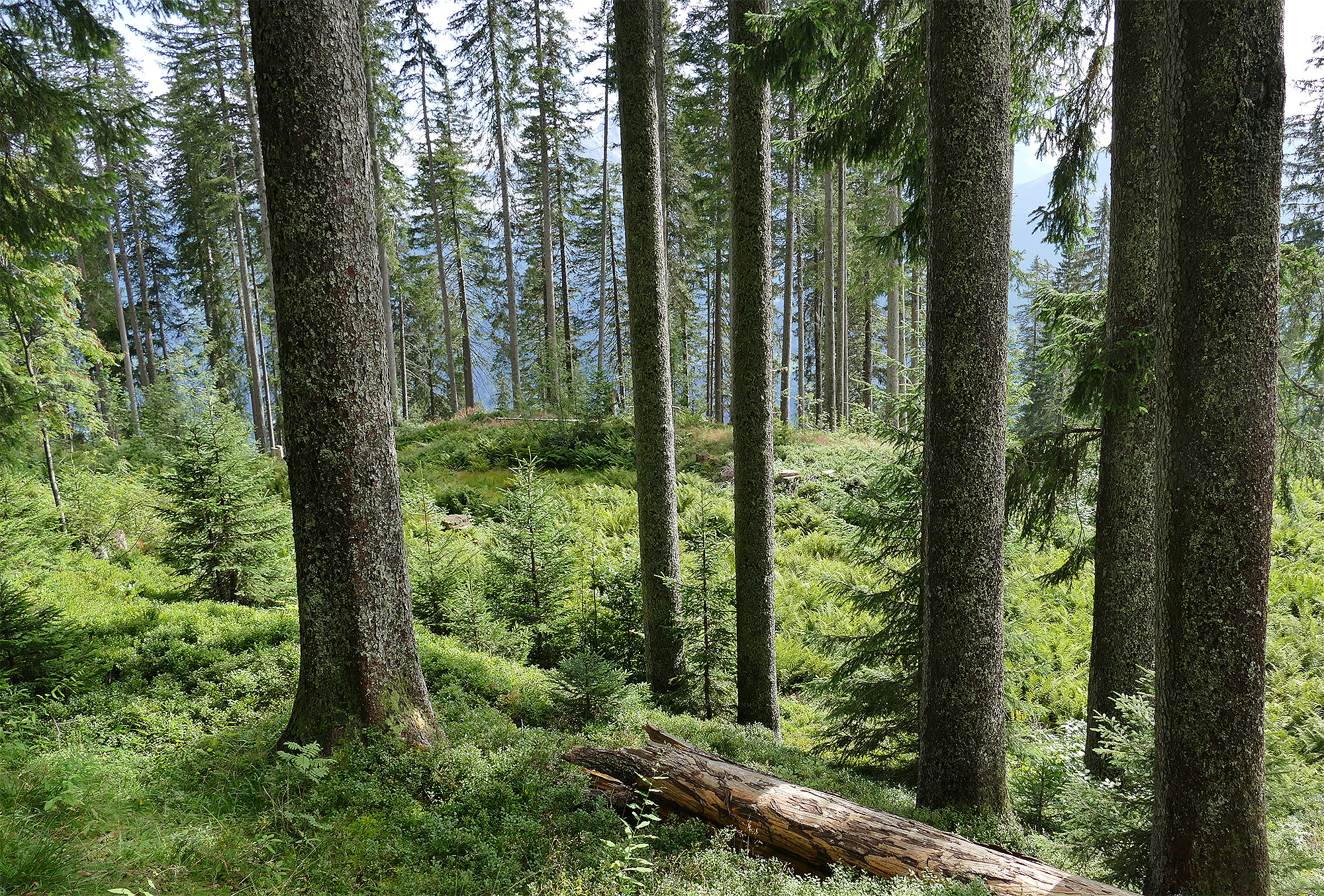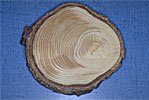Trees are environmentally sensitive. Their growth, as well as their development, is regulated by the environment and weather conditions. In temperate zones (e.g. in central Europe) a warmer spring leads to an earlier appearance of spring phenophases such as foliation or blossom. Warm and wet weather in summer encourages tree growth.
Phenology
The word "pheno" comes from Latin and means "appearance" or "to appear". Phenology is the study of periodic plant and animal life cycles.
The variability of these phenological events provides very important information about past climatic conditions. This is one reason why long term phenological observations and tree ring time series, which were carried out before instrumental measuring started, are so valuable and sought after. Phenology allows us a glimpse into the deep past of climatic variables such as temperature or precipitation.

Fig. 1 - A cross section of a chestnut tree drill core. The water transporting vessels appear white. Vessels which were formed in the warm spring of 1990 (average temperature February and March = 9,6 °C), display a smaller average cross section area (0,06 mm2) than those formed in the cold spring of 1991 (6,3 °C, 0,09 mm2). Photo: Patrick Fonti (WSL)
Phenological observations are unique
The greatest difference between phenological observations and tree ring series is that phenological observations cannot be reconstructed later on. When gaps occur in observations the data is missing for ever. Also, phenological time series cannot be extended into the past. Tree rings have an advantage in that they can subsequently be drilled out, analysed, dated and measured. Of course wood from the required period of time must be available.
Can gaps in phenological time series really not be reconstructed? Certain tree ring characteristics provide information about weather conditions, therefore the question arises as to whether any of these characteristics could provide details about when phenophases occurred.
Tree rings contain information about phenophases

Fig. 2 - In order to be able to correlate spring phenophases e.g. foliation with the anatomical characteristics of spring wood vessels long time series of phenological observations are necessary. Photo: Thomas Reich (WSL)
The Research Institute for Forest, Snow and Landscape (WSL), in collaboration with the Geographical Institute of Bern University, has started a project to find answers to this question. The study is based on the idea that anatomical characteristics of wood cells (e.g. cell size, cell form and number of cells) can register weather conditions in a greater temporal resolution.
For example, scientists have discovered that the size of the earlywood vessels of chestnut trees, i.e. water conducting cells and which are produced at the beginning of a vegetation period, contain a temperature signal whereby larger vessels in general correspond to a cold spring (Fig. 1). Therefore conclusions can be made about spring temperatures from the size of the earlywood vessels of chestnut trees. Using a similar technique it could also be possible to compare the appearance of spring phenophases such as foliation (Fig. 2) with the anatomical characteristics of spring wood vessels. However, long and continuing phenological time series observations are necessary for such a comparison and time series data available for such a study on chestnut trees on the southern side of the Alps are still too short. (Data has only been available since 1996).
Translation: Dawn Meister, Wettswil


